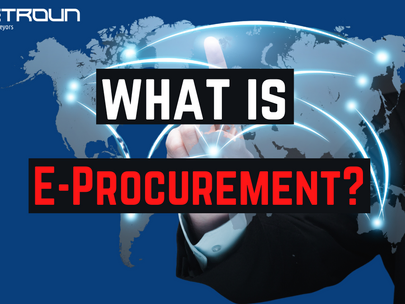E-procurement is a technological advancement within the construction industry that simply means to carry out processes ‘online’ and through information and networking systems. E-procurement may include processes such as;
· E-tendering
· E-auctioning
· E-invoicing
· E-payment
· Among others
As touched on in previous blog posts and videos, construction is often seen as being ‘stuck in the past’ compared to other industries. A lot of this is due to the complex nature of construction projects but E-procurement is one way that Construction is attempting to bring itself into the present and increase its efficiency and productivity.
Essentially, E-procurement ‘automates’ certain processes and procedures which historically have been carried out using paper-based and human input which in a lot of cases can waste a vast amount of time and cost.
So why exactly is E-procurement becoming a necessary part of a construction project? Well, some of the most common causes of disagreements and disputes in construction contracts is down to an inadequate and insufficient definition of the total scope of works and expectations from the client, as well as general day-to-day management of the project during construction and ability to adapt to and implement changes or variations. However, properly implemented E-Procurement has the ability to aid and improve these areas and bring with it the following benefits;
· Lower transactional costs.
· Better and easier reporting through automation.
· Automatic pre-qualification submission and evaluation.
· Reduced tender cycle times.
· Automatic scheduling of the tender process, with milestones managed and participants alerted.
· And perhaps one of the biggest benefits, Central storage of contract documents.
Because construction projects generally require a huge amount of documents including large files such as drawings, specifications that are frequently updated and superseded throughout. The need for all parties to have immediate access to the most recent versions and be confident in the fact that they are working with the correct information is invaluable.
Of course, as with anything, there are potential drawbacks to e-tendering especially if not implemented and used correctly. Some studies have found that downsides can include;
· Email overload
· Compatibility of software’s
· Training costs
· Inflexibility
· Accessibility
· Incompatible equipment
· Part-time / full-time use of e-procurement and use of a central storage area
· The number of Software platforms developed and the need for contractors to learn this new software and meet individual client’s expectations.
Despite these, it is important to remember that proper and sufficient implementation can eradicate a great deal of these potential drawbacks. And, the advantages to effective implementation will almost always outweigh the disadvantages of sticking with paper-based systems!






